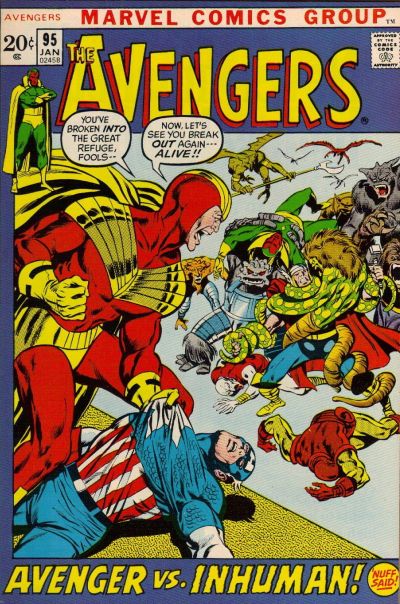
Marvel Two-in-One #2 (March, 1974)

 As we covered here back in August, the twelfth — and final — issue of Marvel Feature ended with Benjamin J. Grimm (aka the Thing), stranded in a desert in the American Southwest. But we Marvel Comics readers of 1973 had no need to worry over the fate of our rocky orange hero, since just two months later, the narrative of Ben’s travails picked right up in Marvel Two-in-One #1 — the first issue of a brand-new title devoted to the “Thing Team-Up” series premise that had made its debut in Marvel Feature #11.
As we covered here back in August, the twelfth — and final — issue of Marvel Feature ended with Benjamin J. Grimm (aka the Thing), stranded in a desert in the American Southwest. But we Marvel Comics readers of 1973 had no need to worry over the fate of our rocky orange hero, since just two months later, the narrative of Ben’s travails picked right up in Marvel Two-in-One #1 — the first issue of a brand-new title devoted to the “Thing Team-Up” series premise that had made its debut in Marvel Feature #11.
With the new title came a (mostly) new creative team; for, while longtime Fantastic Four inker Joe Sinnott soldiered on, making sure that Aunt Petunia’a favorite nephew remained reliably on-model, the series was now being written by Steve Gerber and pencilled by Gil Kane. Gerber and Kane faithfully picked up the threads left behind by previous storytellers Mike Friedrich and Jim Starlin, having Ben Grimm finally reach civilization and buy a bus ticket home to New York — only to exchange it for one for Florida, after catching sight of a news story regarding a certain muck-encrusted mockery of a man who’d been sighted shambling about the Sunshine State’s swampy Everglades. “Like it ain’t bad enuff just bein’ the Thing –!” Ben complained aloud to an uncaring universe. “This bug-eyed mudball’s gotta come along and rip off my name!” Read More












